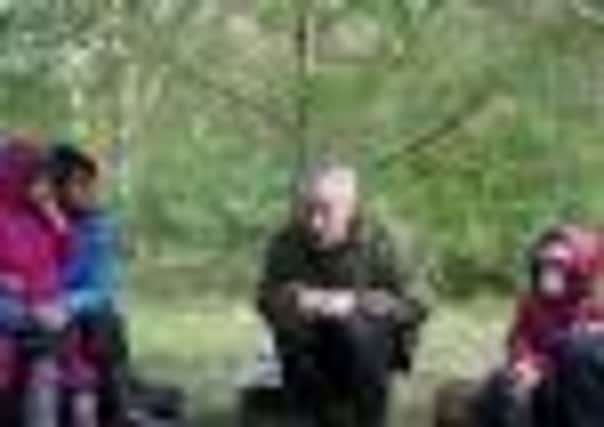Babes in the wood explore the outdoors


It is autumn in the Colne Valley. The leaves are falling. The river flows swiftly by. And the babes are out in the woods.
Babes in the Wood, a pre-school group with a difference, is meeting in a small pocket of woodland next to the Huddersfield Narrow Canal in Slaithwaite.
Advertisement
Hide AdAdvertisement
Hide AdChildren and their carers listen intently as the session leader tells the adventures of a bird with a broken wing. Left behind after the autumn migration, it is turned away by the oak and birch trees before finding refuge in the branches of a kindly spruce. The holly offers its berries as food, and happily the bird survives until spring.
The story, known as Evergreen, is an old one, adapted by Alan Scully of Birch Forest Schools, to suit his session today. The children are now enthralled as he creeps towards a nearby tree. “Can you hear a bird?” he asks. They follow him, straining to see and hear.
With the air of a magician, he reaches into its branches and produces a small bird. It is a stick, with oak leaf wings and a felt pen face. The children will now make their own stick birds, and find a soft place for them to live.
There is something undeniably theatrical about Alan’s session. The stage is set with a parachute canopy, a circle of logs to sit on and Growly Owl, a handmade wooden collection box in the shape of an owl, looking on.
Advertisement
Hide AdAdvertisement
Hide AdAlan says: “In an age where technology and an overload of information seems to dominate, forest schools helps promote a connection with nature that sometimes seems to be a feature of a time gone by; a childhood we all remember but somehow seem unable to translate for the modern world.
“Forest schools focus on development of the individual rather than education. It’s about small, achievable steps. It’s a process which develops self esteem, self confidence and social skills and promotes improvement in gross and minor motor skills.”
Until four years ago Alan was a web designer, working on Huddersfield University’s virtual learning environment.
“The idea that you could cater to different learning styles through technology seemed increasingly absurd,” he remembers.
Advertisement
Hide AdAdvertisement
Hide AdThe irony of the change in direction is not lost on him. “I’ve gone from e-learning to tree learning,” he jokes.
Back at the session, the children are finding sticks and helping Alan use loppers to cut them. For many teachers, the very thought of using tools around a fire next to a fast flowing river is enough to provoke a fit of health and safety-itis. One of the key opportunities forest schools offer, Alan says, is learning to manage risk, both physical and emotional.
“We have stringent policies and procedures for managing risk around tools, fire and the environment’ he says. ‘To me, risk taking is part of everyday life.
“The key is to use positive language and to make safe practice a regular and central part of the experience. We try not to talk about danger, but about keeping safe. Repetition and routine helps to make careful behaviour second nature.”
Advertisement
Hide AdAdvertisement
Hide AdEach Babes in the Wood session begins with the same routine. Children create their own boundaries by tying red ribbons to trees. They mark the river, holes, bogs, brambles, and create a safe area to play.
They sing songs as they practice walking around the outside of the fire circle. This way they learn to avoid walking through the fire circle, even before it is lit.
“Repeating these games helps the children and the adults relax, get to know each other and feel secure,” Alan explains.
Initially funded by the National Lottery, the twice-weekly Babes in the Wood sessions are now run on a pay to attend basis. Some of the parents have begun to volunteer as assistants. And there are plans to expand beyond Slaithwaite and offer similar provision in other Colne Valley villages
Advertisement
Hide AdAdvertisement
Hide AdNext week, the Babes will make their own kazoos, which they will take home. Even at this early age they will learn to build shelters, identify plants and animals, cook outdoors and get used to tools and their uses.
“The philosophy of forest schools is to encourage and inspire individuals of any age through positive outdoor experiences,” Alan said.
As the son of two teachers, education is in his blood, but at heart he is a designer-maker, with a passion for bushcraft.
“I could make something and sell it but it’s more rewarding to show people how to make it themselves. Supporting families to learn how to play outdoors is one of the forest school’s most rewarding aspects.”